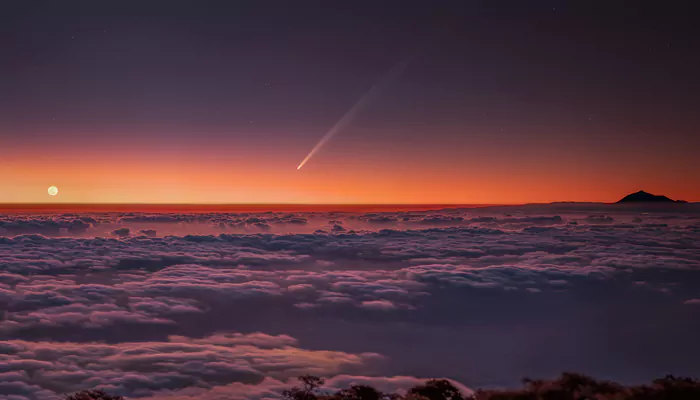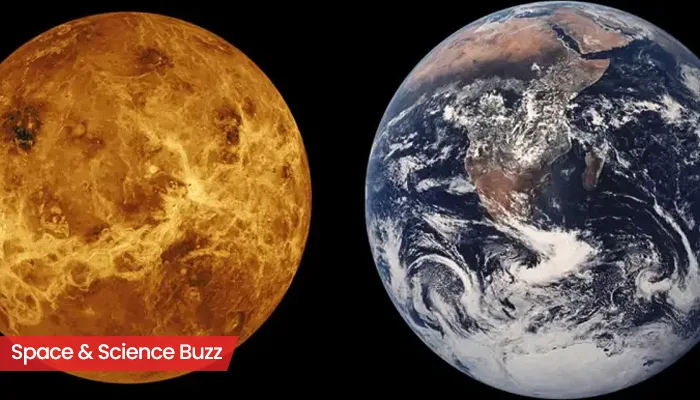
Here are today’s most important updates from the realm of Science and Space.
Ladakh’s Cosmic Gateway: Unveiling the World’s Highest Gamma Ray Telescope
World's largest imaging Cherenkov telescope, situated at an altitude of almost 4,300 metres at Ladakh's Hanle was inaugurated on Wednesday. The Major Atmospheric Cherenkov Experiment (MACE) observatory has been indigenously built by the Mumbai-based Bhabha Atomic Research Centre (BARC) in collaboration with Electronics Corporation of India Ltd (ECIL) and other Indian industry partners. MACE is 21 metres in diameter, 175 tonnes heavy, has reflector area of 356 sqm and 1,424 diamond-turned metallic mirror facets, 712 actuators, 1,088 photo-multiplier tubes, and 68 camera modules. Laddakh’s Hanle offers extremely low light pollution, required for gamma ray observations.
This observatory will allow scientists to study high-energy gamma rays along with paving the way for deeper understanding of supernova, black holes, and gamma-ray bursts.
Another World Beneath the Arctic: Scientists Discover Towering Structures
MBARI researchers and their collaborators have discovered large underwater ice formations in a remote region of the Arctic. This discovery reveals an unanticipated mechanism for the ongoing formation of submarine permafrost ice.
— MBARI (@MBARI_News) October 1, 2024
Dive in: https://t.co/InEPrMRRr7 pic.twitter.com/LGkRERpe44
(Credit - X/@MBARI_News)
Scientists from Monterey Bay Aquarium Research Institute (MBARI) have detected multiple mysterious underwater structures, larger than football fields on the seafloor in the Canadian Beaufort Sea, a remote part of the Arctic. According to data obtained during 2010-2022, nearly 65 newly formed craters were detected, the largest among them has a size of six-storey buildings.
“We previously believed all underwater permafrost was leftover from the last ice age, but we’ve learned that submarine permafrost ice is also actively forming and decomposing on the modern seafloor. Our work shows that permafrost ice is both actively forming and decomposing near the seafloor over widespread areas, creating a dynamic underwater landscape with massive sinkholes and large mounds of ice covered in sediment," stated the study’s lead author Charlie Paull, of the MBARI.
Twin Comets Grace the Night Sky: Don’t Miss Their October Appearance

Stargazers are in for a treat in this October as two comets shine bright in the sky. Comet Tsuchinshan-ATLAS or Comet A3, which is observed once in 80,000 years, will be clearly be visible on October 12. The comet will make its closest approach to Earth when its brightness will be at its peak. The second comet, Comet C/2024 S1 (Atlas) or A11bP7I will also be visible to the naked eye during Oct. 23 - Oct. 28. This comet belongs to the "Kreutz sungrazer" group of comets. It will be brighter than Venus, the brightest object in the sky.
Ocean Heatwave: Collisions Between Whale Sharks and Ships on the Rise
Rising ocean temperatures are disrupting marine ecosystems, a new study finds — but recent Conservation International projects offer hope for sharks.
— Conservation Intl (@ConservationOrg) October 4, 2024
LEARN MORE: https://t.co/hEBJGC4yzw pic.twitter.com/uLyXokeeNu
(Credit - X/@ConservationOrg)
Scientists from the University of Southampton and Marine Biological Association (MBA) predicted that the rising ocean temperatures will increase the collision between whale sharks and ships. The study estimated that, the co-occurrence of whale sharks and large ships could increase by 15,000 times than the current levels by the end of the century. This is primarily due to climate-driven habitat shifts, pushing the whale sharks into areas with heavy maritime traffic. As shipping traffic is predicted to rise significantly, the threat to whale sharks could intensify further. This highlights the immediate need for conservation efforts as well as mitigating climate change.



.webp)
.WEBP)
.WEBP)
.webp)
.webp)


.webp)
.webp)
.webp)